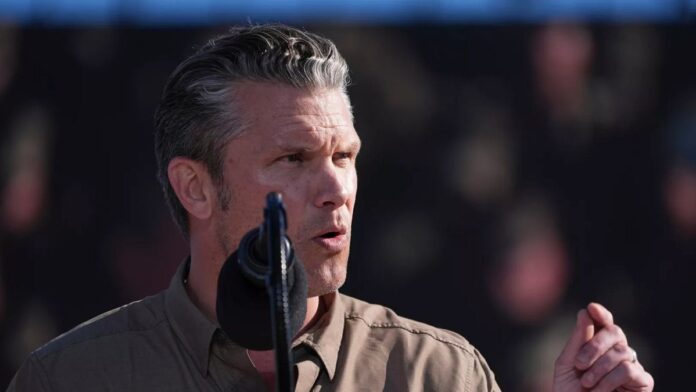Defense Secretary Pete Hegseth on Wednesday said the US military launched its ninth strike against an alleged drug-carrying vessel, killing all three people onboard in the eastern Pacific Ocean and expanding the Trump administration’s campaign against drug trafficking in South America.
First, Hegseth shared on social media about another incident that killed two people Tuesday night in the eastern Pacific before announcing the ninth strike in an Oval Office meeting with US President Donald Trump and Secretary of State Marco Rubio.
The latest attacks, a departure from the seven previous US strikes that had targeted vessels in the Caribbean Sea, bring the death toll to at least 37 in the Trump administration’s crackdown on suspected drug trafficking boats.
The strikes, which began last month, represent an expansion of the US military’s targeting area as well as a shift to the waters off South America, where much of the cocaine from the world’s largest producers is smuggled.
Hegseth’s social media posts also drew a direct comparison between the war on terrorism that the US declared after the 11 September 2001 attacks and the Trump administration’s crackdown.
“Just as Al Qaeda waged war on our homeland, these cartels are waging war on our border and our people,” Hegseth said, adding, “there will be no refuge or forgiveness—only justice.” Later on Wednesday, he referred to the alleged drug runners as “the ‘Al Qaeda’ of our hemisphere.”
Targeting a boat in thoroughfare for cocaine smuggling
In the first brief video Hegseth posted on Wednesday, a small boat, half-filled with brown packages, is seen moving along the water. Several seconds into the video, the boat explodes and is seen floating motionless on the water in flames.
The second video shows another boat moving quickly before being struck by an explosion. A video apparently recorded after the explosion shows packages floating in the water.
Trump has justified the strikes by asserting that the United States is engaged in an “armed conflict” with drug cartels and proclaiming the criminal organisations to be unlawful combatants, relying on the same legal authority used by President George W. Bush’s administration for the war on terrorism.
In his posts on the strikes, Trump has repeatedly argued that illegal narcotics and the drug fentanyl carried by the vessels have been poisoning Americans.
Trump says strikes on land could be next
Asked about the latest boat attack on Wednesday, Trump insisted that “we have legal authority. We’re allowed to do that.” He said similar strikes could eventually come on land.
“We will hit them very hard when they come in by land,” Trump told reporters in the Oval Office. “We’re totally prepared to do that. And we’ll probably go back to Congress and explain exactly what we’re doing when we come to the land.”
Meanwhile, concern over the legality of the strikes has continued to grow as US lawmakers from both political parties raise objections to Trump ordering military actions without receiving authorisation from Congress or providing many details.
Appearing alongside Trump on Wednesday, Secretary of State Marco Rubio defended such strikes, saying, “If people want to stop seeing drug boats blow up, stop sending drugs to the United States.”
Trump said the strikes he is ordering are meant to save Americans, and “the only way you can’t feel bad about it … is that you realise that every time you see that happen, you’re saving 25,000 lives.” Rubio said.
But there is also speculation regarding the real intent of some of the strikes and the deployment of US Marine troops over the past two months in the Caribbean, particularly near Venezuela.
The bulk of American overdose drug deaths, often touted by Trump, are from fentanyl, a drug that is transported by land largely from Mexico, not Venezuela.
And despite Venezuela being a major drug transit zone, the eastern Pacific Ocean, not the Caribbean, is the primary area for smuggling cocaine.
Colombia and Peru, countries with coastlines on the eastern Pacific, are the world’s top cocaine producers. Wedged between them is Ecuador, whose world-class ports and myriad maritime shipping containers filled with bananas have become the perfect vehicle for drug traffickers to move their product.
